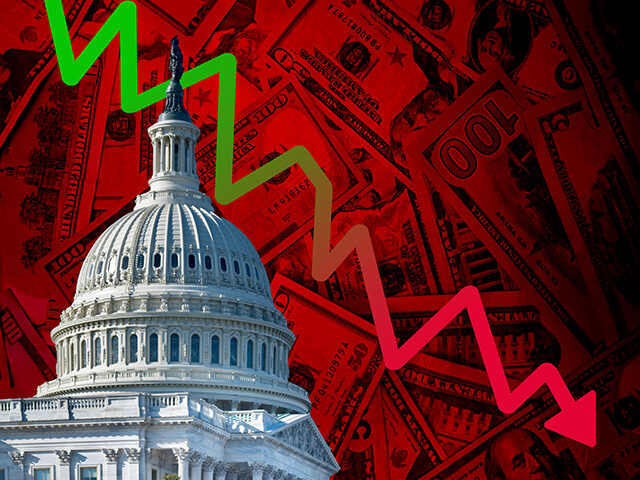Inversion at the Short End
The talk in Washington, DC, is that it might take a market “freak out” to force the White House and House Republicans to come to an agreement to raise the debt ceiling.
The idea is that so long as stocks keep rising, policymakers will remain sanguine about the approach of the so-called “X-date” when the U.S. government will run short of money to pay its bills. There is a bit of a paradox going on here. Stocks are buoyant—the Nasdaq is up 18 percent year to date—in part because of the widespread expectation that a deal will be reached. Yet that ongoing buoyancy may be standing in the way of a deal.
There is one part of financial markets where there is arguably evidence that there could be some risk of a serious encounter with the debt ceiling. The yield curve on very short-term debt issued by the U.S. government is deeply inverted. The yield on four-week Treasury bills is 5.349 percent, which is 0.355 of a percentage point above the yield on the three-month Treasury bill. It is 0.425 of a point above the six-month bill.
Joe Lavorgna, former Trump administration economist and now chief U.S. economist at SMBC Nikko Securities America, describes this inversion at the short end of the curve as “an oddity that reflects a nonzero probability of a missed interest payment or technical default.”
The Producer Price Index Also Rises
The producer price index (PPI) rose 0.2 percent in April after declining a half a percentage point in March. This was pretty much in line with expectations and supports the argument that the economy picked up at least some momentum as the second quarter of the year began.
Prices for final demand services rose 0.3 percent, and prices for final demand goods rose 0.2 percent. Excluding food and energy, final demand prices rose 0.2 percent. Excluding trade services, a measure of margins at wholesalers and retailers, doesn’t change the picture. This also rose 0.2 percent month to month.
Final demand trade services margins rose 0.5 percent, suggesting pricing power on the part of merchants. This is likely a reflection of the earlier drawdown in inventories that has led to fewer full warehouses and less need to discount goods. It is also likely an indication that consumer demand remains strong. Trade services margins for personal consumer goods rose 0.5 percent, while trade services margins for capital equipment declined 0.2 percent.
You can glimpse the fallout from the inventory drawdown elsewhere in the producer price index report. Margins for transportation and warehousing of goods fell 1.4 percent, comprised of a 1.4 percent decline for personal consumption goods and a 1.5 percent decline for capital equipment.
As the chart below shows, margins for trade services remain very high compared with the pre-pandemic era, but they are no longer rising. Still, remaining elevated at this level is an indication that demand is still outstripping supply.

The drawdown in inventories will also reverse itself in the coming months, which will fuel gross domestic product and add pricing pressure in the transportation and warehousing sectors. At the very least, this will ease recessionary pressures and may even push back a recession from later this year into the start of next year.
The Fed’s View
Despite the rise in monthly PPI, there’s nothing in the April report that would push the Federal Reserve away from pausing at the June meeting. Based on the consumer price index and the PPI, analysts at Bank of America calculate that the Fed’s favored measure of inflation—the personal consumption expenditure price index—will increase around 0.3 percent on a monthly basis, which would leave the year-over-year rate unchanged at 4.6 percent. That’s probably good enough for a Fed that wants to pause.

COMMENTS
Please let us know if you're having issues with commenting.